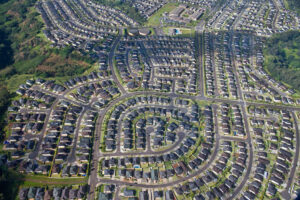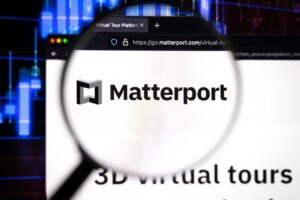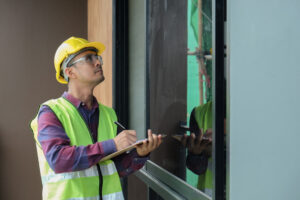Due diligence is a critically important part of commercial real estate acquisition. Whether you’re a Lender or Borrower you need to make sure your commercial real estate due diligence company pays close attention to detail. You also want to ensure they know what to look for during your property inspection.
Most commercial property sales are transacted on an “as-is” basis. Because you don’t have a warranty on the property you purchase as a Borrower or underwrite as a Lender, conducting proper due diligence is all the more essential.
Although there are many things included on a due diligence report, we will focus on some of the common things inspectors may overlook. The items listed below can lead to costly renovations and improvements to your commercial real estate acquisition down the road, so it is important to make sure that you address them with on-site due diligence.
Commercial Real Estate Due Diligence Checklist
Think of this as a due diligence checklist for commercial real estate, with a special focus on multifamily properties.
1. Painted Sprinklers
When the fire sprinklers on your new property are painted over, that’s bad news for you as an owner or lender. If sprinkler heads were accidentally painted over during a renovation by owners or by tenants, just a small amount of paint can delay or prevent sprinklers from deploying to contain a fire.
The National Fire Protection Association (NFPA) has guidelines that require the complete removal from service of sprinklers with any amount of aftermarket paint on them. Some inspectors miss painted sprinklers because they are not completely painted over. But they don’t have to be completely painted over to require removal and replacement.
2. Stab-Lok Circuit Breaker Panels
When it comes to acquiring a commercial real estate due diligence company, you’ll want one who knows about electrical panels. From the 1950s through the 1980s, the Federal Pacific Electric Company (FPE) manufactured many electrical systems for use in commercial and residential buildings.
While not all the electrical systems FPE made were problematic, their Stab-Lok circuit breakers often don’t “trip” when they become overloaded, causing fires that result in the loss of property and life.
With an estimated 270 million Stab-Lok panels still in use today, experts think that these faulty circuit breakers are responsible for 2,800 fires, 13 deaths, and $40 million in property damage each year. For obvious reasons, it is important that property inspectors identify these panels in their reports.
3. Polybutylene Piping
Once hailed as the piping of the future, polybutylene piping was used in many properties from the mid-1980s through the mid-1990s. It is not used anymore: experts now believe polybutylene piping reacts poorly to oxidants, such as chlorine, found in city water supplies, causing them to grow brittle and crack.
Polybutylene piping has caused hundreds of millions in water damage in residential and commercial properties across the United States. This piping is a difficult weakness for many property inspectors to identify as one needs to possess knowledge of where to look (e.g. water mains and water meters on the exterior of properties and in-door piping around appliances and elsewhere).
4. Aluminum Wiring
According to experts, if you have aluminum wiring on your property, you likely have a fire waiting to happen. Multifamily and other commercial properties constructed between 1965 and 1972 were wired with aluminum instead of copper.
The aluminum wiring itself isn’t the problem, as the metal conducts electricity safely and efficiently. Fires occur because of the aluminum at connections. In fact, the U.S. Consumer Product Safety Commission (CPSC) concludes that properties with aluminum wiring are 55x more likely to be a fire hazard than properties wired with copper.
All due diligence reports should contain a thorough breakdown on both the electrical systems for a given property, as well as any concerns with wiring and potential fire hazards.
5. Sylvania Electrical Panels
You’ll remember that we mentioned above that you’ll want to hire a commercial real estate due diligence company that understands electrical panels. Like the problematic FPE electrical panels, Sylvania panels have almost identical risks.
Sylvania panels can be identified by the following three names: Sylvania, GTE, and Zinsco. During the 1970s, these panels were installed in properties across the country.
But electricians have discovered that Sylvania-GTE-Zinsco panels fail, leaving property owners at risk of fires. The truth is that these panels may operate normally for years, but as energy demands increase, they have shown a tendency to overheat and cause fires.
Experts estimate that 25% of these panels may fail to trip in response to overheating, which produces a hazardous situation. On-site property inspectors need to carefully examine your building’s electrical panels to assess how they function, and whether a particular panel has a reputation of failing.
6. Mold
Sick building syndrome describes multifamily apartments where occupants experience acute, but non-specific health problems linked directly to the amount of time they spend in that building. While property owners in some housing markets (e.g. New York City) may face legal liabilities as a result of their “sick buildings,” what’s at issue for most is making sure their tenants remain as safe and healthy as possible.
Mold is the root cause of sick buildings. When you purchase or underwrite a property you want your inspector to search for signs of mold.
Obviously, mold can be easy to see in some circumstances. You might see mold growing in areas of the building. On other occasions, mold is all but invisible. Mold spores can exist in a building without any outward signs of mold growth.
Leaking pipes, water seeping through the foundations, and poorly constructed roofs are all signs of mold. Previous water damage, such as leaks and floods, that never fully dried can also produce mold damage.
Your property inspector should be diligent about not only checking for outward signs of mold, but also areas where unseen mold may be growing.
Armada Due Diligence
The above list only covers a few of the things that may be missed during a property inspection.
Check out Armada Services Due Diligence to discover how we can help.







